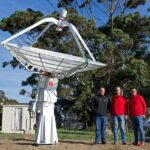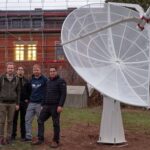
SPIDER 300A installed in South African Astronomical Observatory headquarters in Cape Town
The 3 meter radio telescope is controlled remotely by the University of Cape Town thanks to RadioUniversePRO software: it allows work out plenty of radio astronomy programs for education. PrimaLuceLab team completed the installation and recorded the first light!









